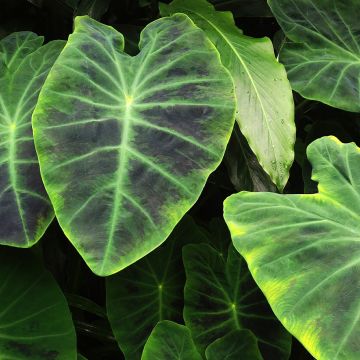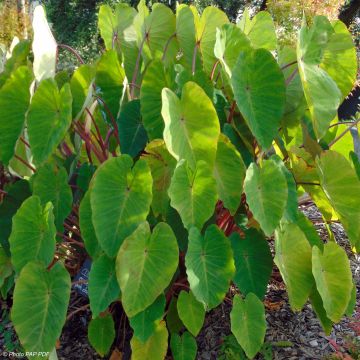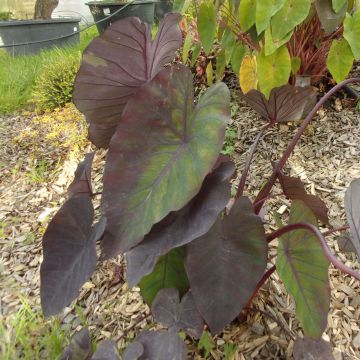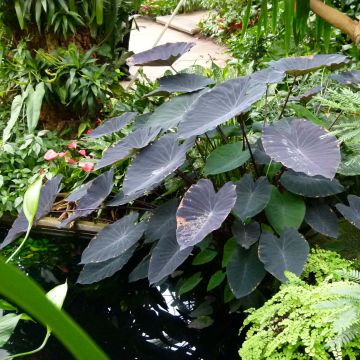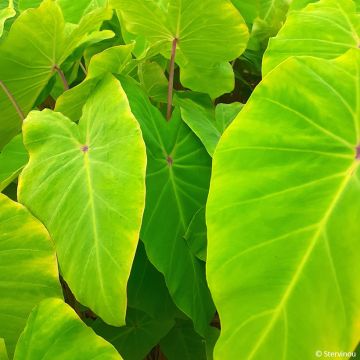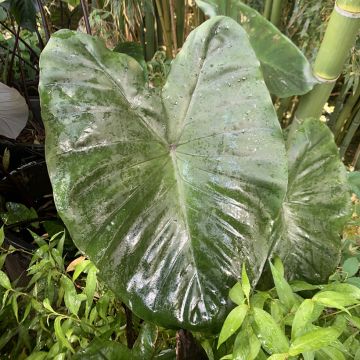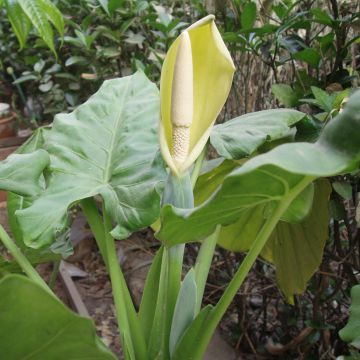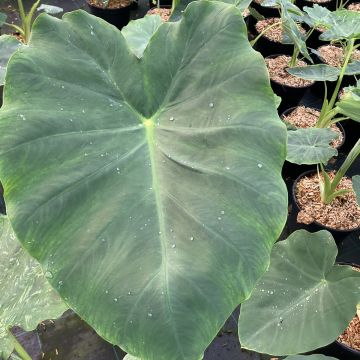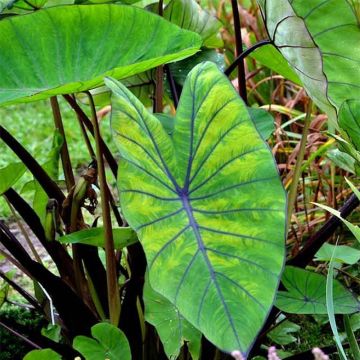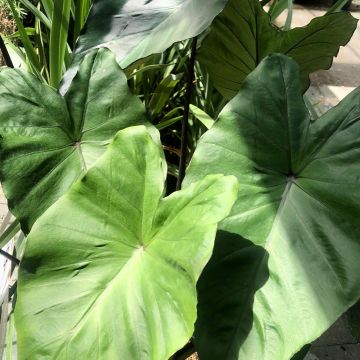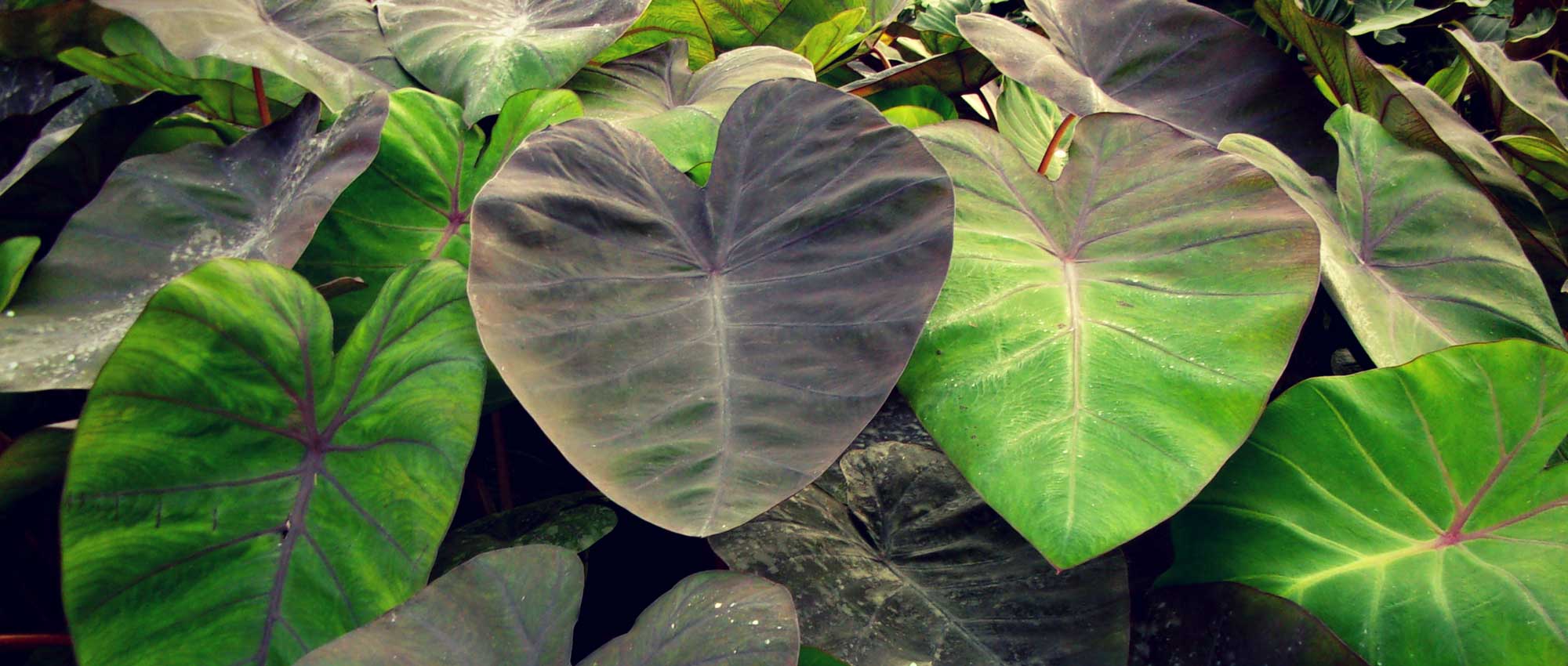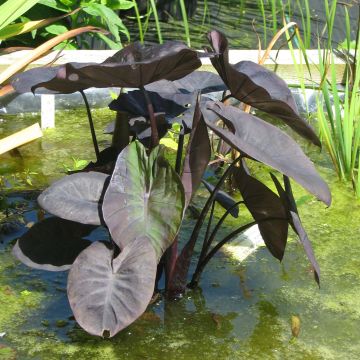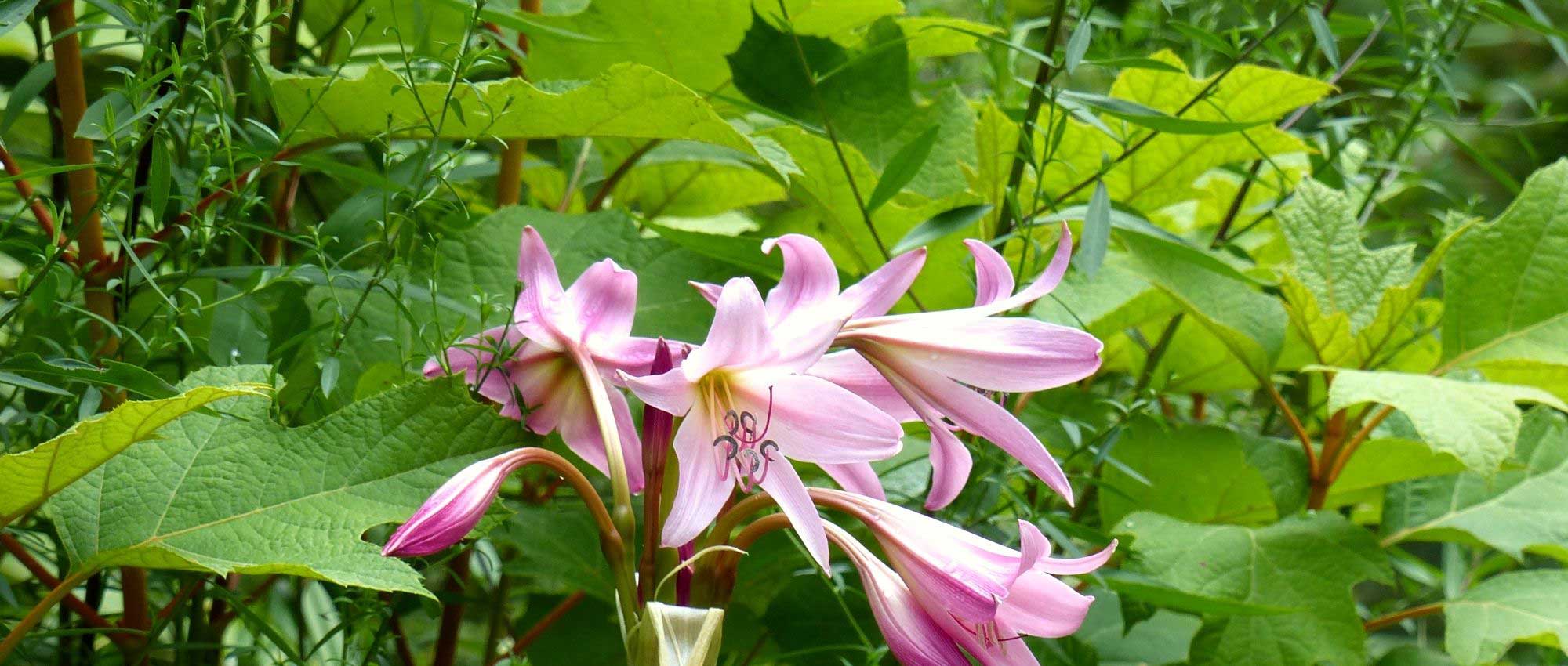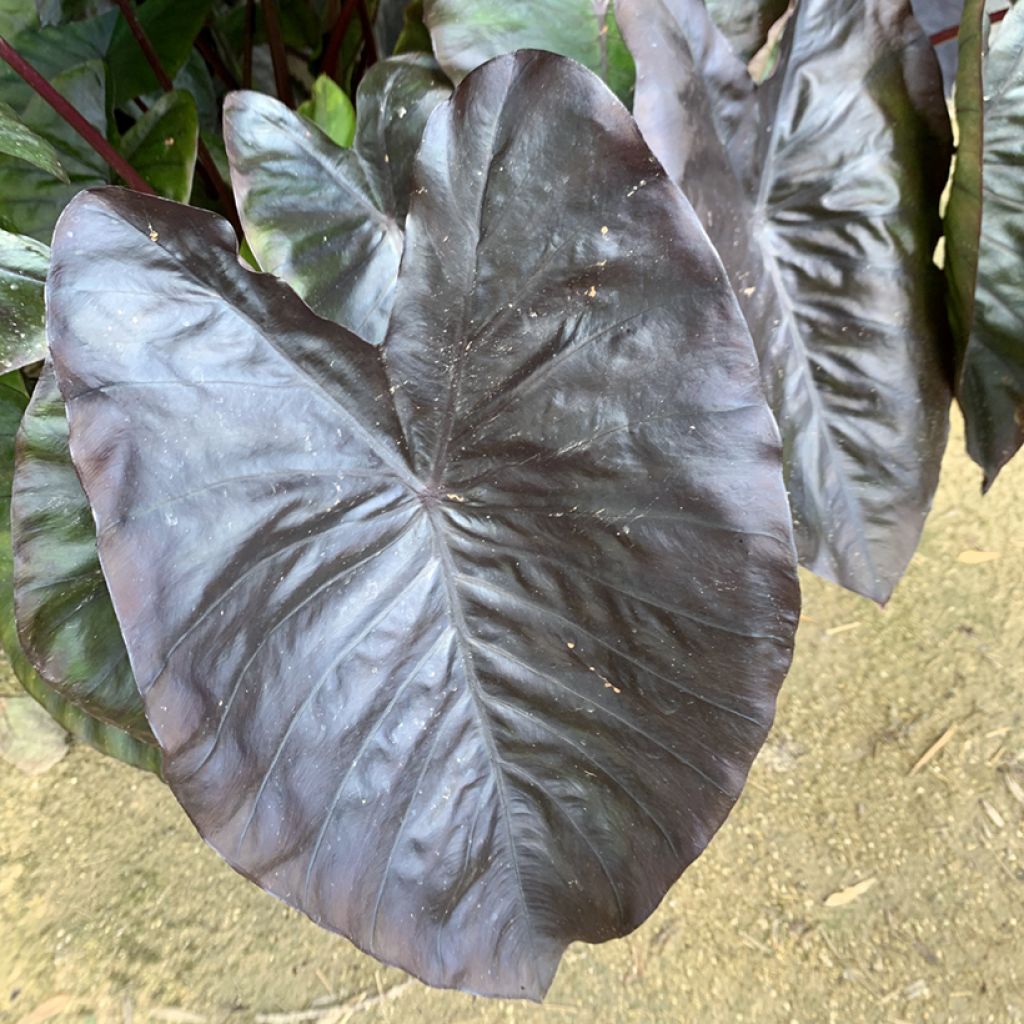

Colocasia esculenta Diamond Head - Elephant Ears
Colocasia esculenta Diamond Head - Elephant Ears
Colocasia esculenta 'Diamond Head' ( ROYAL HAWAIIAN series )
Taro, Elephant Ear, Cocoyam, Dasheen
Special offer!
Receive a €20 voucher for any order over €90 (excluding delivery costs, credit notes, and plastic-free options)!
1- Add your favorite plants to your cart.
2- Once you have reached €90, confirm your order (you can even choose the delivery date!).
3- As soon as your order is shipped, you will receive an email containing your voucher code, valid for 3 months (90 days).
Your voucher is unique and can only be used once, for any order with a minimum value of €20, excluding delivery costs.
Can be combined with other current offers, non-divisible and non-refundable.
Why not try an alternative variety in stock?
View all →This plant carries a 12 months recovery warranty
More information
We guarantee the quality of our plants for a full growing cycle, and will replace at our expense any plant that fails to recover under normal climatic and planting conditions.
Would this plant suit my garden?
Set up your Plantfit profile →
Description
Colocasia esculenta 'Diamond Head' forms a beautiful clump of large undulate leaves in a magnificent dark and glossy purple. They slightly droop under their weight and tend to point towards the ground. The rootstock is hardy up to -10°C, the foliage disappears as soon as it freezes, but the plant regrows from the rootstock in the following spring. Outdoor cultivation is reserved for mild climates. Elsewhere, prefer planting in a pot with generous and regular watering. Lush and decorative, this variety of elephant ear will find its place in a flowerbed, a large container, or on the edges of a water feature.
From the arum family, Colocasia esculenta, also known as Edible Taro or Taro, is a perennial species probably native to India and has naturalized in tropical regions of South America and Oceania, and later in tropical Africa. Colocasia 'Diamond Head' is an American selection from the Royal Hawaiian series, which includes disease-resistant varieties that thrive in the sun and can easily be grown in pots. It is a herbaceous perennial plant that develops from a tuberous rootstock. The mature plant reaches 1 to 1.20 m in height and 60 to 90 cm in diameter. It forms a clump of large leaves carried by long upright petioles. Its lance-shaped leaves can reach 35 to 60 cm in length. They are glossy, undulate, and dark purple with black reflections. Its summer flowering is rare, only on mature plants. It appears as a spathe and a spadix in shades of yellow-green.
Colocasia 'Diamond Head' is a rather easy plant to grow in rich and moist soil. It appreciates a sunny or semi-shaded exposure. This tropical plant with lush purple foliage stands out as a centerpiece in an exotic or contemporary setting. Give it enough space to express its full potential. It can also be planted in a large container on a terrace or on the edges of a water feature in favorable climates. Pair this elephant ear with Canna 'Angélique' with purple-violet foliage and salmon-pink flowers, and with Dahlia paysage 'Schippers Bronze' with purple foliage and coppery coral-red flowers. Create contrast with Colocasia 'Mojito' with light green foliage dotted with purple spots.
It is a semi-hardy plant (the rootstock can withstand temperatures around -10°C). Its vegetation is destroyed as soon as it freezes, but the plant regrows, quite late in spring, from its rootstock kept almost dry and mulched in winter. In cold climates, prefer container cultivation, which is more practical for overwintering.
The tubers of true taro (Colocasia esculenta) are consumed in Africa, China, Polynesia, and several other parts of the world. They are rich in starch. Its young leaves are also edible and cooked like spinach.
Flowering
Foliage
Plant habit
Safety measures
Botanical data
Colocasia
esculenta
'Diamond Head' ( ROYAL HAWAIIAN series )
Araceae
Taro, Elephant Ear, Cocoyam, Dasheen
Cultivar or hybrid
atteintescutaneomuqueuses
Cette plante peut provoquer l'apparition de réactions cutanées indésirables, une atteinte des yeux, ou des difficultés respiratoires si elle est ingérée.
Ne la plantez pas là où de jeunes enfants peuvent évoluer. Evitez tout contact avec la peau: privilégiez l'emploi de gants pour la manipuler. En cas de contact, lavez-vous soigneusement les mains et rincez abondamment à l'eau la zone concernée. Lavez les vêtements entrés en contact. En cas de réaction cutanée, contactez votre médecin ou le centre antipoison le plus proche de chez vous. En cas d'atteinte étendue ou de difficultés respiratoires, appelez immédiatement le 15 ou le 112.Pensez à conserver l'étiquette de la plante, à la photographier ou à noter son nom, afin de faciliter le travail des professionnels de santé.
Davantage d'informations sur https://plantes-risque.info
Other Elephant ears - Colocasia and Alocasia
View all →Planting and care
Plant your Colocasia 'Diamond Head' in full sun or partial shade, avoiding direct sunlight. It requires a rich, humus-bearing soil that is moist to wet. It can also be planted with its neck in water, up to 10 cm deep. It will appreciate a nitrogen-rich fertiliser, such as grass clippings. Planting in a large container is also possible. Just make sure to water it regularly and generously during the growing season, and reduce watering in winter. This Colocasia is a hardy perennial, tolerating temperatures down to -10°C. You can grow it in the ground by carefully mulching the stump in winter. When grown in a pot, it can be overwintered in a greenhouse or conservatory. If the atmosphere is too dry in winter, the plant may be susceptible to attacks from red spiders. It is also possible to dig up the bulb after the first frost, store it in a dry, dark place, and replant it after the last frost. Watch out for attacks from slugs and snails, as they enjoy feeding on its young leaves.
Planting period
Intended location
Care
Planting & care advice
This item has not been reviewed yet - be the first to leave a review about it.
Haven't found what you were looking for?
Hardiness is the lowest winter temperature a plant can endure without suffering serious damage or even dying. However, hardiness is affected by location (a sheltered area, such as a patio), protection (winter cover) and soil type (hardiness is improved by well-drained soil).

Photo Sharing Terms & Conditions
In order to encourage gardeners to interact and share their experiences, Promesse de fleurs offers various media enabling content to be uploaded onto its Site - in particular via the ‘Photo sharing’ module.
The User agrees to refrain from:
- Posting any content that is illegal, prejudicial, insulting, racist, inciteful to hatred, revisionist, contrary to public decency, that infringes on privacy or on the privacy rights of third parties, in particular the publicity rights of persons and goods, intellectual property rights, or the right to privacy.
- Submitting content on behalf of a third party;
- Impersonate the identity of a third party and/or publish any personal information about a third party;
In general, the User undertakes to refrain from any unethical behaviour.
All Content (in particular text, comments, files, images, photos, videos, creative works, etc.), which may be subject to property or intellectual property rights, image or other private rights, shall remain the property of the User, subject to the limited rights granted by the terms of the licence granted by Promesse de fleurs as stated below. Users are at liberty to publish or not to publish such Content on the Site, notably via the ‘Photo Sharing’ facility, and accept that this Content shall be made public and freely accessible, notably on the Internet.
Users further acknowledge, undertake to have ,and guarantee that they hold all necessary rights and permissions to publish such material on the Site, in particular with regard to the legislation in force pertaining to any privacy, property, intellectual property, image, or contractual rights, or rights of any other nature. By publishing such Content on the Site, Users acknowledge accepting full liability as publishers of the Content within the meaning of the law, and grant Promesse de fleurs, free of charge, an inclusive, worldwide licence for the said Content for the entire duration of its publication, including all reproduction, representation, up/downloading, displaying, performing, transmission, and storage rights.
Users also grant permission for their name to be linked to the Content and accept that this link may not always be made available.
By engaging in posting material, Users consent to their Content becoming automatically accessible on the Internet, in particular on other sites and/or blogs and/or web pages of the Promesse de fleurs site, including in particular social pages and the Promesse de fleurs catalogue.
Users may secure the removal of entrusted content free of charge by issuing a simple request via our contact form.
The flowering period indicated on our website applies to countries and regions located in USDA zone 8 (France, the United Kingdom, Ireland, the Netherlands, etc.)
It will vary according to where you live:
- In zones 9 to 10 (Italy, Spain, Greece, etc.), flowering will occur about 2 to 4 weeks earlier.
- In zones 6 to 7 (Germany, Poland, Slovenia, and lower mountainous regions), flowering will be delayed by 2 to 3 weeks.
- In zone 5 (Central Europe, Scandinavia), blooming will be delayed by 3 to 5 weeks.
In temperate climates, pruning of spring-flowering shrubs (forsythia, spireas, etc.) should be done just after flowering.
Pruning of summer-flowering shrubs (Indian Lilac, Perovskia, etc.) can be done in winter or spring.
In cold regions as well as with frost-sensitive plants, avoid pruning too early when severe frosts may still occur.
The planting period indicated on our website applies to countries and regions located in USDA zone 8 (France, United Kingdom, Ireland, Netherlands).
It will vary according to where you live:
- In Mediterranean zones (Marseille, Madrid, Milan, etc.), autumn and winter are the best planting periods.
- In continental zones (Strasbourg, Munich, Vienna, etc.), delay planting by 2 to 3 weeks in spring and bring it forward by 2 to 4 weeks in autumn.
- In mountainous regions (the Alps, Pyrenees, Carpathians, etc.), it is best to plant in late spring (May-June) or late summer (August-September).
The harvesting period indicated on our website applies to countries and regions in USDA zone 8 (France, England, Ireland, the Netherlands).
In colder areas (Scandinavia, Poland, Austria...) fruit and vegetable harvests are likely to be delayed by 3-4 weeks.
In warmer areas (Italy, Spain, Greece, etc.), harvesting will probably take place earlier, depending on weather conditions.
The sowing periods indicated on our website apply to countries and regions within USDA Zone 8 (France, UK, Ireland, Netherlands).
In colder areas (Scandinavia, Poland, Austria...), delay any outdoor sowing by 3-4 weeks, or sow under glass.
In warmer climes (Italy, Spain, Greece, etc.), bring outdoor sowing forward by a few weeks.






























